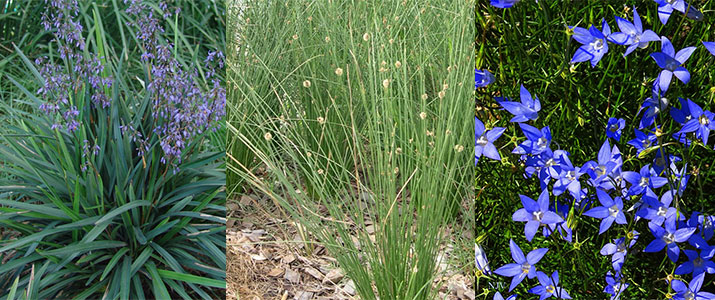Creating your native garden
Creating your garden does not need to be lots of work. Use what you already have and build on this to create a wildlife friendly garden.
By clearing up and removing all the existing vegetation in your garden you could be doing more harm than good. Fallen branches and leaves, sticks, rocks and even weeds provide important habitat for wildlife.
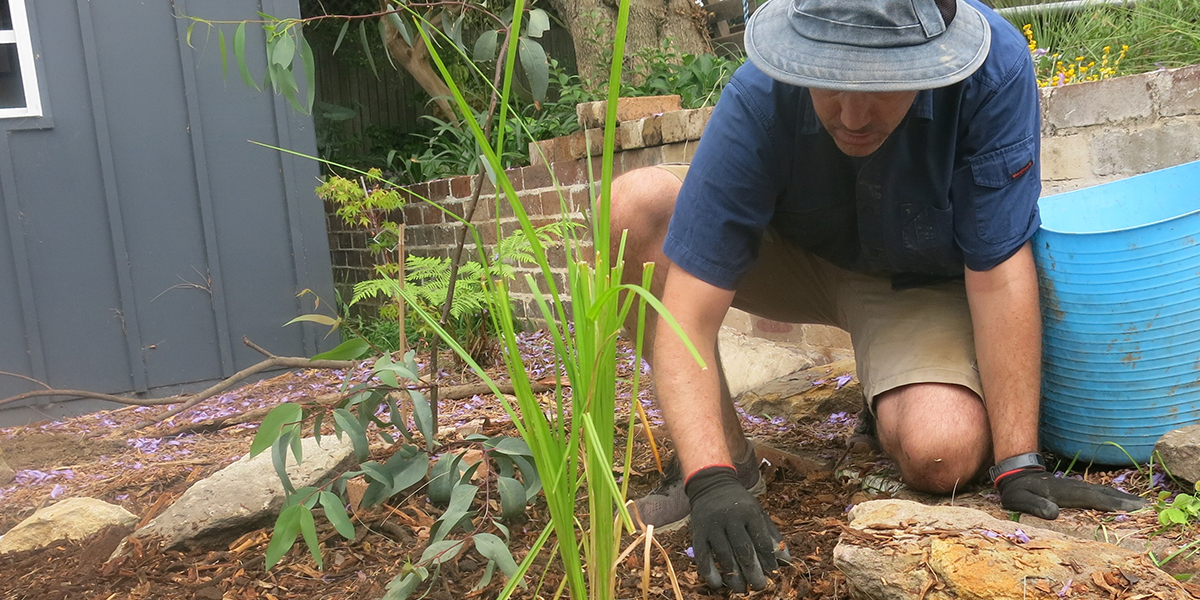
Habitat for wildlife
The Inner West area hosts a diverse range of amazing colourful and interesting birds, frogs, lizards, insects and mammals. Some of these animals are listed as threatened species.
Bringing native wildlife to our gardens can make them joyful and lively places. to We also all have a responsibility to care for our backyard buddies and give them places of refuge.
There are a few simple things we can do to make our gardens safe places for our native wildlife.
Garden habitat is created by incorporating food, water and shelter into your garden. These are the essential things wildlife need to survive.
- Food: Plant a range of small, medium and tall plants in your garden to provide food for different native animals.
- Water: Increase the amount of water available to wildlife by adding a pond, water feature or bird bath.
- Shelter: Increase the amount of shelter by having rock piles, nest boxes or hollow logs, fallen branches and keeping mature trees in gardens.
Be a responsible cat and dog owner. Wildlife need places in the garden where they can be safe from predation and disturbance from pets.
Cats should be kept entirely indoors or indoors as much as possible. Consider installing a cat run or cat enclosure to give your cat a place to safely bask in the sun.
Habitat for small birds
More than 160 bird species have been sighted in the Inner West area.
Small bird numbers in particular are declining as they have been less successful at adapting to urban environments and more vulnerable to attack from predators.
They need our help for places to seek refuge and call home. Native plants provide seeds, flowers, nectar and insects for our native birds to use.
- Food: Plant a mix of natives that provide food throughout the seasons and different types of food (i.e. seeds, fruits, nectar, attract insects).
- Water: Place a shallow bird bath with shrubs nearby where birds can escape to.
- Shelter: Mix up your garden structure by including a mix of ground covers, grasses, shrubs, and trees. Plant dense thickets of spiky shrubs where small birds can hide.
- Nesting: Include leaf litter, sticks, bark and grasses.
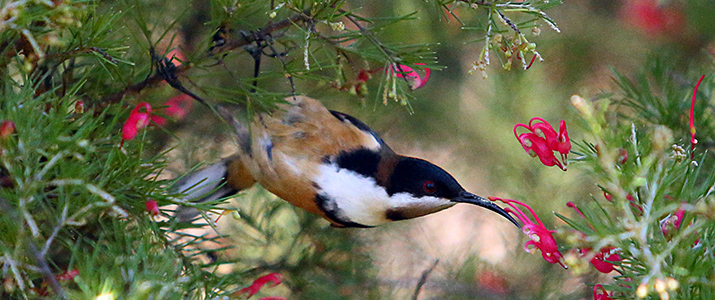
To feed or not to feed? The best way to look after our native birds is to provide them with the right habitat and fresh clean water. If you do feed, only supply small amounts of unprocessed food or seed and ensure that the good hygiene is maintained to stop potential spread of disease. WIRES also have information on feeding wildlife.
Explore our local bushland and parks and observe the kinds of small birds present and what kinds of plants they are using. Small birds love shrubs and trees for perching, nesting, foraging and hiding from predators. The Birds in backyards webpage also has some great tips for creating bird friendly gardens and outdoor areas.
What to plant to attract small birds:
- A diverse range of ground covers, grasses, shrubs, and trees that will provide small birds with shelter and protection from predators and larger aggressive birds.
- Insect-eating birds like Wrens and Willie Wagtails need plants like Old Man’s Beard (Clematis aristata) False Sarsaparilla (Hardenbergia violacea) and Tea-tree (Leptospermum) that attract insects. They also love to forage for insects amongst leaf litter.
- Nectar-loving birds like Eastern Spinebills need plants like Grey Spider Flower (Grevillea buxifolia) and Hairpin Banksia (Banksia spinulosa) that produce nectar.
- Seed-eating birds like Finches need plants like Weeping grass (Microlaena), Basket grass (Osplismenus) and Mat-rush (Lomandra longifolia)that produce seeds and berries.
- Fruit-eating birds like Silvereyes need plants like Prickly Beard-heath (Leucopogon juniperinus), Wombat berry (Eustrephus) and Cheesewood (Pittosporum) that produce fruit and berries.
- Spikey plants like Needlebush (Hakea sericea), Native Blackthorn (Bursaria spinosa), Gorse Bitter Pea (Daviesia ulicifolia) and Heathy Parrot Pea (Dillwynia retorta) provide protection from predators.
Avoid planting:
Natives with big showy flowers like Grevillea cultivars that you can purchase at many nurseries. These plants attract large birds like Noisy miners and parrots that scare away little birds. Plant a variety of flowering natives, particularly winter flowering plants, to ensure food is available year-round.
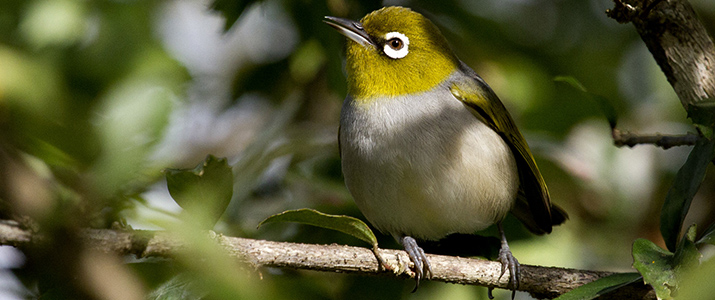
A frog friendly garden
Frogs are highly sensitive to environmental changes.
In the Inner West area, we have a small number of different types of frogs that still live here, including both ground and tree-dwelling species. Whilst building a frog pond may help to create breeding habitat for frogs, you can still have a frog friendly garden without a pond.
- Food: Provide leaf litter or compost to attract insects for frogs to eat. Install a small solar powered light to attract insects at night.
- Water: Place shallow containers of fresh water in the shade to keep frogs cool and moist. Change this water regularly to avoid mosquitos breeding here.
- Shelter: Create damp, shady habitats with piles of rocks, logs, and upturned flowerpots. Provide cool hiding places with plenty of groundcovers, small shrubs and grasses.
What to plant to help and attract frogs:
A frog friendly garden can be created with any of the groundcovers, grasses and small shrubs listed in the Native plants of Inner West section.
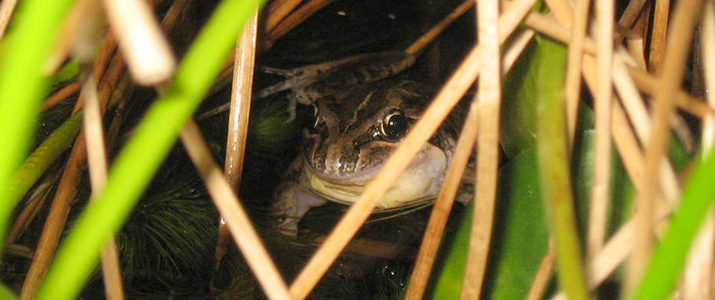
Never relocate frogs or tadpoles to or from your garden, as this can spread disease among frog populations.
Habitat for lizards
If you have been having trouble with garden pests, attracting lizards into your garden can help manage populations by eating insects, slugs, snails, and larvae.
- Food: Leave leaf litter around and plant berry or nectar producing plants to attract insects.
- Water: Provide a shallow bowl of fresh water. Change this water regularly to avoid mosquitos breeding here.
- Shelter: Provide hollow logs, boulders, leaf litter, rock piles and bark. Include a variety of native plants and groundcover for shade and hiding places.
- Basking: Provide rocks, bark, and logs in sunny locations.
What to plant to help and attract lizards:
- Native Violet (Viola hederacea)
- Dusky Coral Pea (Kennedia rubicunda)
- Wallaby Grass (Rytidosperma longifolia)
- Weeping Grass (Microlaena)
- Mat-rush (Lomandra longifolia)
- Flax-lilies (Dianella)
Allow leaf litter, mulch and twigs to accumulate and form piles. This provides perfect habitat for small lizards and insects like native bees.
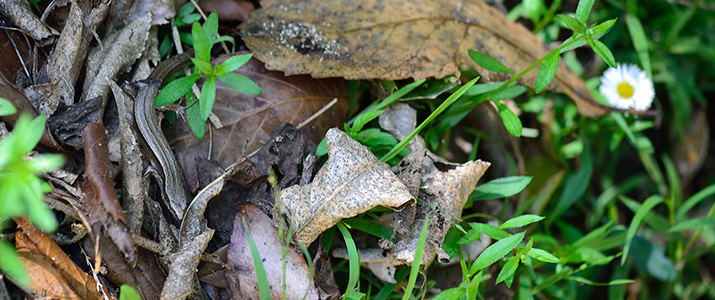
Lizards create nests in moist soil under objects in the garden. Females lay about five eggs that look like mini soft and rubbery chicken eggs. The eggs become enlarged as they absorb moisture from the surrounding soil.
Habitat for insects
Increasing the number of insects in your garden will help pollinate plants and control pest populations. Insects contribute to ecosystem health as nature’s recyclers by breaking down organic materials so that nutrients are released back into the soil. Insects are also food for many larger animals like birds, frogs, lizards and microbats.
- Food: Leave leaf litter and organic matter on the ground for crawling and wriggling insects. Grow a variety of seed and nectar producing plants for flying insects.
- Water: Shallow bowls of fresh water filled with pebbles can provide a source of water and minimise drowning.
- Shelter: Provide plenty of shelter and hiding places with logs, tree hollows, leaf litter or an insect hotel. Include variety in garden structures with groundcovers, grasses, shrubs and trees.
What to plant to encourage helpful insects:
- Banksia
- Wattle (Acacia)
- Bottlebrush (Callistemon)
- Tea tree (Leptospermum)
- Old Man’s Beard (Clematis aristata)
- Pale Fan-flower (Scaevola albida)
- Tick Bush (Kunzea ambigua)
Leave branches, sticks, logs and tree stumps around your garden. Avoid using chemicals, pesticides, non-organic fertilisers or snail pellets which can be harmful to insects and wildlife.
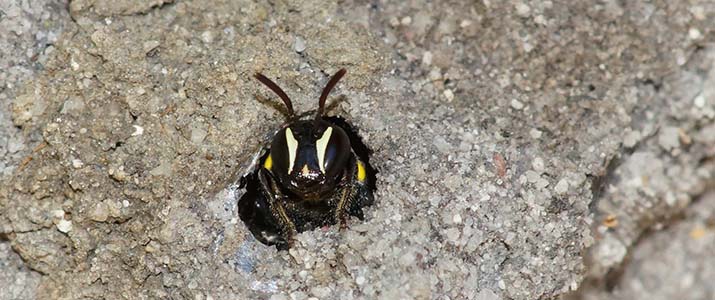
Habitat for mammals
Mammals assist in pollination and controlling insect populations. In the Inner West area, we are fortunate enough to have some different species of microbats, as well as Grey Headed Flying Foxes, Brushtail Possums and Ringtail Possums.
- Food: Grow plants that produce nectar, pollen, fruits and attract insects.
- Water: Provide shallow bowls of fresh water during hot weather.
- Shelter: Plant trees and allow hollows to form. Habitat boxes can provide alternative shelter for microbats, possums and gliders.
What to plant:
- Gum trees (Eucalyptus)
- Banksia
- Bottlebrush (Callistemon)
- Tea-tree (Leptospermum)
- Paperbark (Melaleuca)
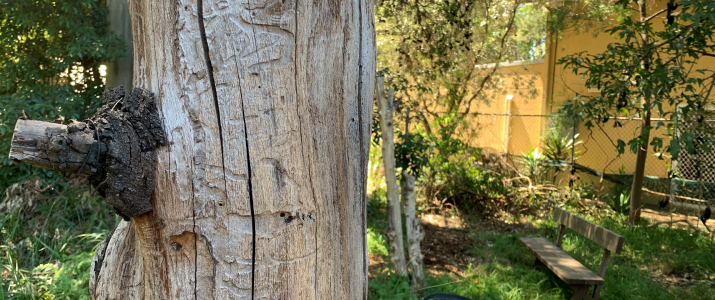
To keep pests away like rats, make sure that you keep any compost bins sealed up and remove pet food and fallen fruit from the garden before night time.
Use wildlife friendly netting to cover fruit trees in your garden. This will assist local wildlife from getting tangled. Plant a variety of flowering natives, particularly winter flowering plants, to ensure food is available year-round.
Wildlife friendly garden features
Insect hotels
Insect hotels have become popular in recent years. Ideally habitat for insects should be provided by growing a variety of native plants of different heights and species.
Allow your garden to have messier patches of fallen dead vegetation for insects to make homes out of. Insect hotels mimic natural features of the environment and offer hibernation and nesting spaces and come in all shapes and sizes. They can also be creative pieces that make a great feature in any garden.
If you are making your own insect hotel, build shelves into them to create a variety of living storeys and use different materials to encourage a greater diversity of insect life. Recycled and natural materials are best and can include stones, tiles, timbers, bamboo, bound reeds, straw, dried grass and bark. Drilling holes into the building materials also creates more spaces for insects to live in.
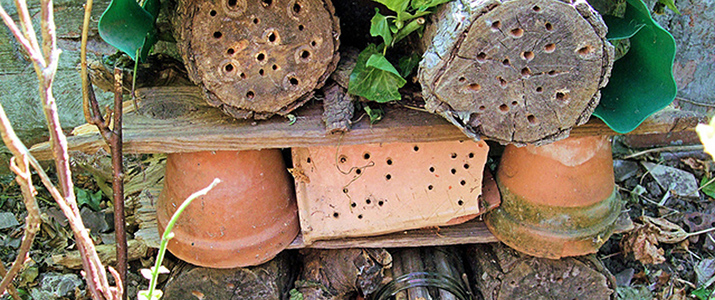
Native bee homes
Native bees come in a great range of colours and sizes, from a tiny 2mm to a large 24mm. Some have furry overcoats while others are smooth and shiny like a stainless-steel kettle. Some are yellow and striped, and others are black and blue. Most native bees are solitary and only around 10% of native bee species are social and build hives.
To provide habitat for native bees, plant bee friendly plants like:
- Native rosemary (Westringia fruticosa)
- Gum trees (Eucalyptus)
- Bottlebrush (Callistemon)
- Paperbark (Melaleuca)
Leave fallen stems, sticks and branches on the ground to provide nesting material and undisturbed patches of bare soil or clay for burrowing bees. Neat piles can be created in more hidden spots in the garden if you are concerned about your garden looking messy. This will provide great habitat for other insects too.
.jpg)
Habitat boxes
Many Australian animals rely on tree hollows for shelter and survival. With urban expansion and the removal of many old trees with natural hollows, we have lost a significant portion of habitat for our local wildlife. Habitat boxes may provide alternative homes for birds and mammals. Microbats, possums and numerous birds like Kookaburras, Wood Ducks, owls and parrots require tree hollows.
As each type of animal has different habitat requirements, they will be attracted to different habitat box types. Therefore, when choosing a habitat box, make sure you know what sort of animal you are trying to create a home for. Good habitat boxes are made using untreated wood, are painted with non-toxic paint and have rough grooves on the inside of the box so that animals can climb out. The box should also have drainage holes in the box base and a hinged lid to allow maintenance access.
As part of Council’s ongoing biodiversity programs, habitat boxes have been installed throughout the Inner West area to offer shelter and homes for local wildlife. Council is also leaving dead trees standing where it is safe to do so and creating artificial hollows for habitat.
Place native leaf litter in the bird and possum boxes as nesting material.
Frog ponds
A pond with partial shade and away from large trees can provide suitable breeding habitat for frogs. Sloping sides and logs will help frogs get in and out of the pond easily, and reeds and sedges growing in the pond can help oxygenate and filter water naturally. Ponds can be planted with reeds like Jointed Twig-rush (Baumea spp.), Common Spikerush (Eleocharis palustris) and Common Tussock Rush (Juncus usitatus).
%20(1).jpg)
Bird baths
Many birds need fresh water both for drinking and bathing, so providing water in your garden is a great way to help them. Place your bird bath so birds can perch nearby to observe the surrounding area for dangers. Plant dense shrubs or trees close by that birds can escape if needed. If the bath is deep or has a smooth base, place pebbles, a stick or brick in it so birds can climb out.
Replace the water every few days and clean the bird bath regularly to keep your local birds in good health.
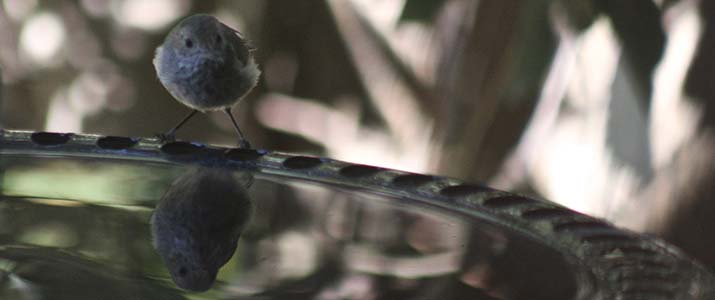
Spiders
Most outdoor spiders are harmless and because they are good natural pest controllers are a great to have in the garden.
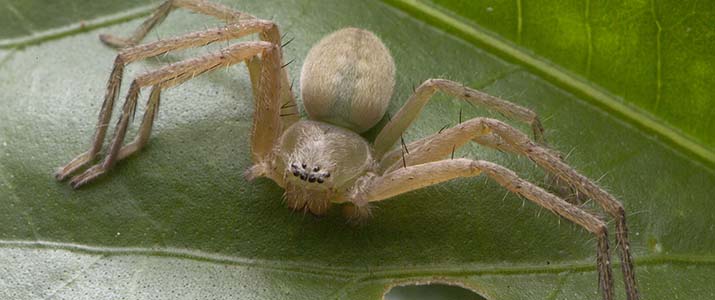
Other garden design considerations
Year-round colour
There are many beautiful plants that flower during spring and summer, providing an abundance and variety of colour, as well as food for native animals.
In winter, however, fewer plants flower and it becomes difficult for animals to find food. Planting trees and shrubs that provide food during winter and early spring will add colour to your garden year-round and help to ensure our local birds and mammals have abundant food throughout the year.
What to plant:
- Hairpin Banksia (Banksia spinulosa) and Forest Red Gum (Eucalyptus tereticornis) can provide nectar for possums and flying foxes.
- Small flowering plants, such as Grey spider Grevillea (Grevillea buxifolia) and Needlebush (Hakea sericea) can provide nectar for small honeyeaters.
- Prickly Parrot Pea (Dillwynia juniperina) and Myrtle Wattle (Acacia myrtifolia) can boost insect numbers for small birds to eat.
- Many wattles have bright yellow flowers during winter that attract a variety of insects for birds to feed on. They then produce seed pods that are eaten by parrots.
Look for more plants with year round colour in the Native plants of the Inner West section for more suggestions of natives that flower during winter.
From left: Banksia spinulosa, Grevillea buxifolia and Dillwynia juniperina
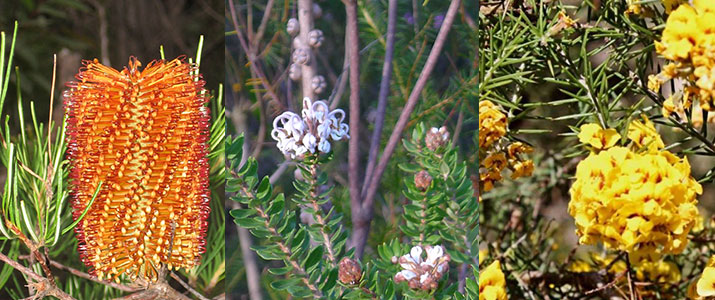
Plants for screening
Native plants may be used to provide privacy or create a formal hedge. These effects can be achieved by using a variety of different sized shrubs or with one row of the same species. For a more natural screening effect, you can also try planting a mixture of different species relatively close together (about 1 to 1.5m apart).
What to plant:
Some of the more effective native screening plants include:
- Needlebush (Hakea sericea)
- Native Snow-in-Summer (Melaleuca linariifolia )
- Sydney Golden Wattle (fast growing) (Acacia longifolia)
- Black Wattle (fast growing) (Callicoma serratifolia)
- Blueberry Ash (Elaeocarpus reticulatus)
- Christmas Bush (Ceratopetalum gummiferum)
- Rough fruited Pittosporum (Pittosporum revolutum)
- Native Rosemary (Westringia fruticosa)
Native climbers, like Old Man’s Beard (Clematis aristata) and Purple coral pea (Hardenbergia violacea) are also great for covering up a fence. Just add a frame for them to climb up and cover.
Look for for climbing plants in the Native plants of the Inner West section of our website.
From left: Hakea dactyloides, Ceratopetalum gummiferum and Acacia longifolia.
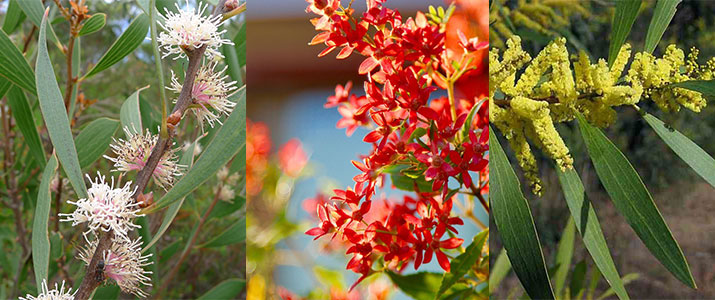
Native lawns and edges
Native grasses can be used as lawns. They are generally low maintenance once established, requiring less mowing, watering and fertilising than exotic grasses. They are however, generally slower to establish and, if grown from seeds or seedlings, require weed control during establishment to achieve a good result.
What to plant:
- Nara (Zoysia macrantha)
- Weeping Grass (Microlaena stipoides)
- Wallaby Grass (Rytidosperma longifolia)
- Red Grass (Bothriochloa macra)
From left: Microlaena stipoides, Rytidosperma longifolia and Bothriochloa macra

If there are areas of your garden that you would prefer not to mow, such as between pavers, you can plant a local groundcover instead.
- Kidney Weed (Dichondra repens)
- Pennywort (Centella asiatica)
- Native Violet (Viola hederacea)
From left: Dichondra repens, Centella asiatica and Viola hederacea.
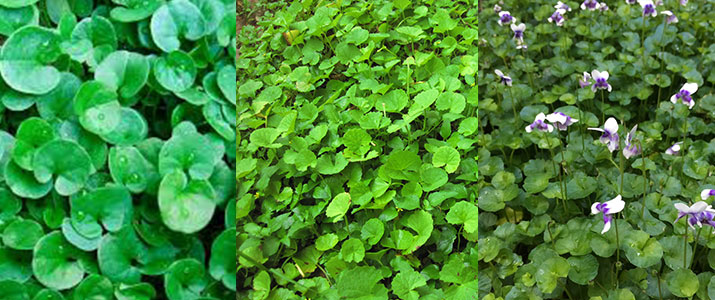
Soft garden edges can be created with many local native plants.
Where you want feature plants, try clumping plants like Tall Sedge (Carex appressa), Mat-rush (Lomandra longifolia), Knobby club rush (Ficinia Nodosa) and Wallaby Grass (Rytidosperma longifolia).
Or add some colour with Flax-lilies (Dianella caerulea) and Australian Bluebells (Wahlenbergia stricta).
Weeping grass (Microlaena stipoides) is soft to walk on and only requires mowing three or four times a year. It grows on both sandy and clay soils, excels in shady locations, and easily self-seeds and spreads into adjacent bare areas.
From left: Dianella caerulea, Ficinia Nodosa and Wahlenbergia stricta.
